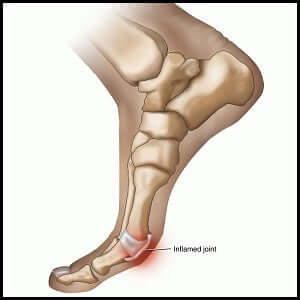Introduction:
Turf toe is a common injury that athletes, especially those involved in sports with frequent stops and starts, often encounter. This type of injury can be painful and, if not properly addressed, may lead to long-term complications. In this blog post, we will delve into the world of turf toe pain, exploring its causes, symptoms, and effective management strategies.
What is Turf Toe?
Turf toe is a sprain of the metatarsophalangeal (MTP) joint, which is the joint at the base of the big toe. It typically occurs when the toe is hyperextended, causing damage to the ligaments and soft tissues surrounding the joint. The name "turf toe" originated from the injury's prevalence among athletes playing on artificial turf surfaces.
Causes and Risk Factors:
Understanding the causes and risk factors of turf toe is essential for prevention. High-impact sports, such as football, soccer, and basketball, increase the risk of turf toe due to the constant pressure and stress placed on the toes during play. Improper footwear, inadequate playing surfaces, and poor training techniques can also contribute to the development of this injury.
Symptoms:
Recognizing the symptoms of turf toe is crucial for early intervention. Common signs include pain, swelling, and limited range of motion in the affected toe. In some cases, athletes may also experience bruising and difficulty bearing weight on the injured foot.
Diagnosis:
If turf toe is suspected, seeking prompt medical attention is important. A healthcare professional will perform a thorough examination, which may include imaging tests like X-rays or MRI to assess the extent of the injury.
Treatment Options:
The treatment approach for turf toe depends on the severity of the injury. In mild cases, rest, ice, compression, and elevation (RICE) may be sufficient. However, more severe cases may require immobilization with a splint or walking boot. Physical therapy exercises are often prescribed to promote healing and restore strength and flexibility.
Prevention Strategies:
Preventing turf toe involves a combination of proper equipment, training techniques, and playing surfaces. Choosing appropriate footwear with sufficient toe protection, maintaining strong foot and leg muscles through targeted exercises, and ensuring fields are well-maintained can all contribute to injury prevention.
Conclusion:
Turf toe is a painful condition that can significantly impact an athlete's performance and overall well-being. By understanding the causes, recognizing the symptoms, and implementing preventive measures, athletes can reduce the risk of turf toe and continue to enjoy their favorite sports with confidence.
Remember, if you suspect you have turf toe or any foot-related injury, it is crucial to consult with a healthcare professional for accurate diagnosis and personalized treatment recommendations.


Share: